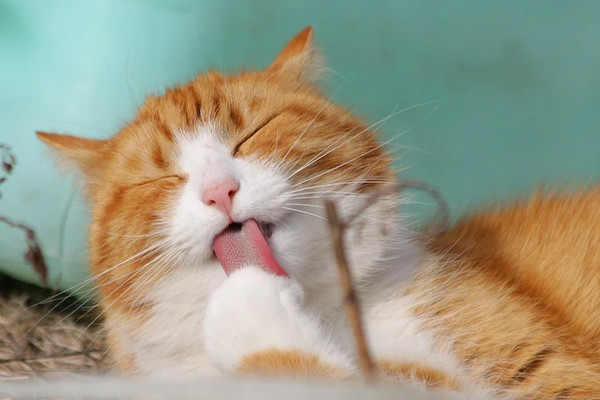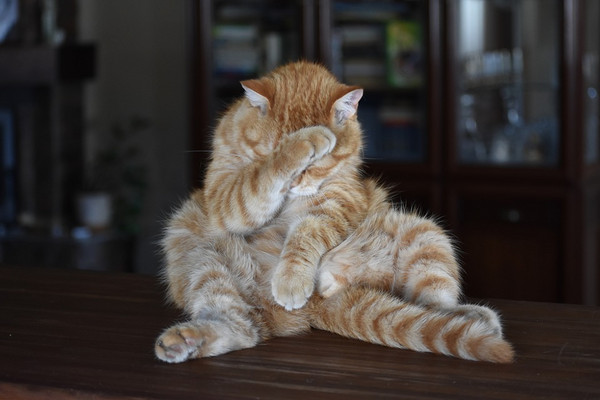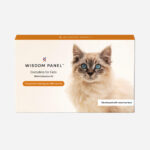A cat’s dietary needs are primarily centered around meat, which might lead you to believe that sausages could be a tasty and suitable treat for your feline friend. Whether you’re considering a sausage as a snack between meals, a special way to show affection, or even as a supplement to their regular cat food, many cats are likely to eagerly devour a piece if offered.
However, before you share that sausage with your kitty, it’s crucial to ask: Can Cats Eat Sausage safely? Or could offering them this seemingly meaty treat be more harmful than helpful? Let’s delve into the ingredients and potential dangers of sausages for cats to understand why they might not be the best choice for your pet.
What Exactly Goes Into a Sausage?
Sausages are a globally enjoyed food with countless regional variations. While recipes differ, the core components remain fairly consistent across most types:
- Meat Base: Sausages are fundamentally made from ground meat. This commonly includes pork, beef, chicken, or turkey. While some manufacturers might highlight a specific type, many use a blend, and the exact composition is often not explicitly detailed. Pork is frequently a dominant meat in many sausage recipes.
- Fat Content: A significant amount of fat is a hallmark of sausages. This fat, often saturated and trans fats, contributes to the flavor and the characteristic “snap” or burst when the sausage casing cooks.
- Seasonings and Spices: Sausages are far from plain meat. They are heavily seasoned with salt and a variety of herbs and spices to enhance their taste. Common additions include coriander, mace, marjoram, black pepper, and cloves.
- Grains and Fillers: To increase volume and reduce the cost, many sausage recipes include grains and fillers. These can be cereal flours and starches derived from rice, potatoes, or corn. The inclusion of these ingredients can sometimes mean that the actual meat content in a sausage is surprisingly low, potentially as little as 32%.
Considering the high meat and fat content, it’s easy to see why sausages might initially seem like an appealing snack for a cat. However, a deeper look reveals several potential health risks that make sausages a less than ideal treat for your feline companion.
 Cat licking its nose after eating, showcasing a common feline behavior after meal times.
Cat licking its nose after eating, showcasing a common feline behavior after meal times.
Nothing beats a good grooming session after enjoying a snack!
Source: Pixabay
Potential Dangers of Sausages for Cats
Maintaining a balanced diet is crucial for a cat’s health, and disrupting this balance can lead to various health issues. The primary concerns with feeding sausages to cats stem from several key components commonly found in them:
- High Fat Content
- Cereals and Fillers
- Preservatives and Artificial Additives
- Salt and Flavor Enhancers
- Meat Quality Concerns
The Problem with Fat Content
While fat is an essential energy source for cats, too much of it can be detrimental. Excessive fat intake can quickly lead to:
- Obesity: Cats are prone to weight gain, and high-fat foods like sausage contribute significantly to this.
- Heart Problems: A diet consistently high in fat can strain a cat’s cardiovascular system.
Cats naturally have high levels of HDL cholesterol, and their diet should ideally contain no more than 20% of calories from fat. Sausages often exceed this, sometimes containing up to 30% fat or even more. This excess can easily push a cat over their recommended daily fat intake, especially if sausages are given as regular treats.
Cereals and Fillers: Unnecessary Carbohydrates
The fillers used in sausages are primarily carbohydrates. Carbohydrates are not a necessary part of a cat’s diet and can be actively unhealthy for them in large quantities.
While cats can use carbohydrates for quick energy bursts, any carbs that aren’t immediately used are converted and stored as fat. This is particularly problematic because:
- Weight Gain: Carb-rich diets contribute to weight gain and obesity in cats.
- Lethargy: The rapid sugar rush followed by a crash from carb-heavy foods can cause lethargy and energy slumps.
Regular consumption of carbohydrate-rich foods like sausages can lead to a range of weight-related health issues in cats, including:
- Mobility Issues
- Diabetes and Pancreatitis
- Liver Disease
These risks are amplified for indoor cats or neutered males, who are generally less active and more prone to weight gain. Managing weight in cats who have become overweight often requires a dedicated diet plan to help them return to a healthy size.
Preservatives and Artificial Additives: Hidden Hazards
To extend shelf life and enhance flavor, sausages often contain preservatives and artificial additives. While these are deemed safe for human consumption, they can be problematic for cats. Sulfites and nitrates, commonly used in sausages and processed meats, are of particular concern.
Excessive intake of sulfites like sulfur dioxide, potassium sulfite, and sodium sulfite can lead to a deficiency in Vitamin B1 (thiamine) in cats. Thiamine is crucial for neurological function, and a deficiency can result in neurological problems. Even small amounts of sulfites should be avoided to protect your cat’s thiamine levels.
Salt and Flavor Enhancers: Overload and Toxicity
Cats have a lower tolerance for salt compared to humans and require a relatively bland diet. While sodium is essential for bodily functions, too much salt can be harmful, especially for cats with pre-existing conditions such as:
- Urinary Tract Infections (UTIs), including cystitis and bladder stones
- Kidney Disease
- Liver Problems
Excessive salt intake can exacerbate these conditions. Additionally, many herbs and flavor enhancers used in sausages, while appealing to humans, offer no nutritional benefit to cats and can even be toxic.
A prime example is garlic, along with other allium vegetables like onions and chives. These are common sausage seasonings but are toxic to cats, potentially causing anemia and gastrointestinal issues.
Meat Quality: Uncertainty and Sensitivity
The quality of meat used in sausages can be variable, and it’s often difficult to ascertain the exact types and cuts of meat included. While this ambiguity might be acceptable for human consumers, it can be problematic for cats, especially those with sensitive stomachs or food intolerances.
Uncertain meat sources increase the risk of digestive upset and allergic reactions in sensitive cats. Kittens and senior cats are particularly vulnerable. Kittens have developing digestive and immune systems, while senior cats may have declining organ function. Digestive issues in these age groups can lead to:
- Slow Development in kittens
- Rapid Weight Loss in both kittens and senior cats
Both of these can be serious and potentially life-threatening if not managed promptly.
 Ginger cat looking directly at the camera with a slightly guilty or pleading expression.
Ginger cat looking directly at the camera with a slightly guilty or pleading expression.
“It wasn’t me… maybe.”
Source: Pixabay
What Should Cats Ideally Eat?
As a responsible cat owner, understanding feline nutrition is key to ensuring your cat’s long-term health and happiness. Cats are obligate carnivores, meaning their diet must be primarily meat-based to meet their nutritional needs. A cat’s ideal diet should consist mainly of:
- Animal Protein
- Animal Fat
- Essential Vitamins and Minerals
The Importance of Animal Protein
Animal protein should be the cornerstone of a cat’s diet. It provides essential amino acids, such as taurine, which are vital for numerous bodily functions including:
- Muscle Development
- Healthy Skin and Coat
- Organ Function and Maintenance
Cats have evolved to efficiently process animal protein, far more so than plant-based proteins. The efficiency of protein metabolism is measured by its biological value (BV). Animal proteins have a significantly higher BV for cats compared to vegetable proteins.
| Protein Type | Biological Value (BV) |
|---|---|
| Animal Protein (Chicken, Beef, Pork, Ham, Bacon, Salmon, Prawns, Mackerel, Sardines, Tuna, Liver) | 88%–98% |
| Vegetable Protein (Soya, Corn, Sweetcorn, Wheat, Peas, Carrots, Rice) | 45%–68% |
To minimize the risk of food sensitivities, it’s beneficial to know the specific animal protein sources in your cat’s food. Sausage manufacturers, however, often lack transparency in detailing the meat composition of their products.
 Image showcasing various cans of Untamed cat food, highlighting the variety of protein sources.
Image showcasing various cans of Untamed cat food, highlighting the variety of protein sources.
Healthy and identifiable protein sources, the Untamed way!
Image (c) Untamed
Animal Fat: A Secondary Energy Source
Animal fat is not just an energy source for cats; it also plays a crucial role in:
- Providing essential fatty acids for cell health
- Enhancing food palatability, making meals more appealing to cats
However, moderation is key. While some fat is necessary, excessive amounts, like those found in sausages, are not beneficial.
Essential Vitamins and Minerals
Cats require a range of vitamins and minerals for optimal health, including vitamins A, B complex, D, and E, as well as minerals like potassium, phosphorus, magnesium, zinc, manganese, and calcium.
High-quality cat food is formulated to provide these nutrients in the correct proportions. Imbalances, whether excesses or deficiencies, can lead to health problems. For instance, too much vitamin A can cause bone deformities in kittens, and mineral imbalances can disrupt water balance and strain the kidneys and liver.
Sausages are unlikely to provide the balanced nutrition your cat needs in terms of vitamins and minerals. Therefore, relying on them as a significant part of a cat’s diet is risky.
In conclusion, while sausages might contain meat and fat, they do not offer the balanced nutritional profile that cats require. The risks associated with their high fat, salt, filler, and additive content outweigh any potential benefits as a treat for your cat.
Untamed: A Healthier Choice for Your Cat
Untamed cat food is specifically designed to meet the nutritional needs and preferences of cats. Developed from homemade recipes, Untamed focuses on providing the best possible nutrition for your feline.
Untamed stands out because of its commitment to:
- High Animal Protein Content
- Vet-Formulated Nutrition
- Human-Grade Quality Ingredients
Packed with Animal Protein
Each can of Untamed food contains double the amount of animal protein compared to most standard commercial cat foods. With a variety of flavors like Chocka Chicken, Tuck-In Tuna, and Full-On Fishy, Untamed offers meals in both rich jelly and savory gravy, appealing to even the most discerning feline palates. This high protein content ensures that even fussy eaters get the nutrients they need.
Vet-Formulated for Balanced Nutrition
Untamed recipes are carefully formulated by veterinarians to ensure a complete and balanced diet. They contain the right ratios of protein, fat, vitamins, and minerals, and are free from common allergens. Switching to Untamed may lead to noticeable health improvements in your cat.
Human-Grade Ingredients for Superior Quality
Untamed uses only human-grade ingredients, ensuring the highest quality and safety. The ingredient lists are transparent, short, and consistent, allowing you to trust what you are feeding your cat.
Untamed also prioritizes ethical and sustainable practices:
- Meat and fish are sourced from sustainable and cruelty-free suppliers.
- Packaging is 100% recyclable.
- Operations are carbon-neutral.
Choosing Untamed is a step towards ensuring your cat’s health and happiness while also supporting ethical and sustainable practices.
 A monthly meal pack of Untamed cat food, showcasing a variety of flavors and textures.
A monthly meal pack of Untamed cat food, showcasing a variety of flavors and textures.
The diverse and nutritious Untamed range in a convenient monthly pack.
Image (c) Untamed
Getting Untamed for Your Cat
Making the switch to Untamed is easy and convenient. There’s no need to search for it in stores; Untamed delivers directly to your door.
To get started with Untamed cat food delivery:
- Provide information about your cat through a simple online form.
- Create a personalized meal plan tailored to your cat’s needs.
- Order a trial pack online.
Once your trial pack arrives, let your cat experience the delicious and nutritious meals from Untamed. With a convenient cat food subscription service, you’ll receive regular deliveries, ensuring you never run out of food. You can expect to see positive changes in your cat’s health and well-being over time:
| Timeline | The Untamed Effect |
|---|---|
| After a week | Increased energy levels, less litter box odor |
| Within two months | Leaner physique, more playful behavior |
| After four months | Shinier coat, improved digestion |
| Long-term | Healthy weight management, overall well-being |
When transitioning your cat to Untamed from a less healthy diet (dry, semi-moist, or raw food), gradual introduction is recommended. Cats, especially certain breeds like Siamese, Persian, or Sphynx, can be particular about their food. To ensure a smooth transition:
- Immediately stop giving unhealthy snacks like sausages.
- Gradually mix Untamed with your cat’s current food.
- Observe as your cat naturally prefers Untamed over their old food.
Explore more about what’s safe and unsafe for cats with our other guides:

